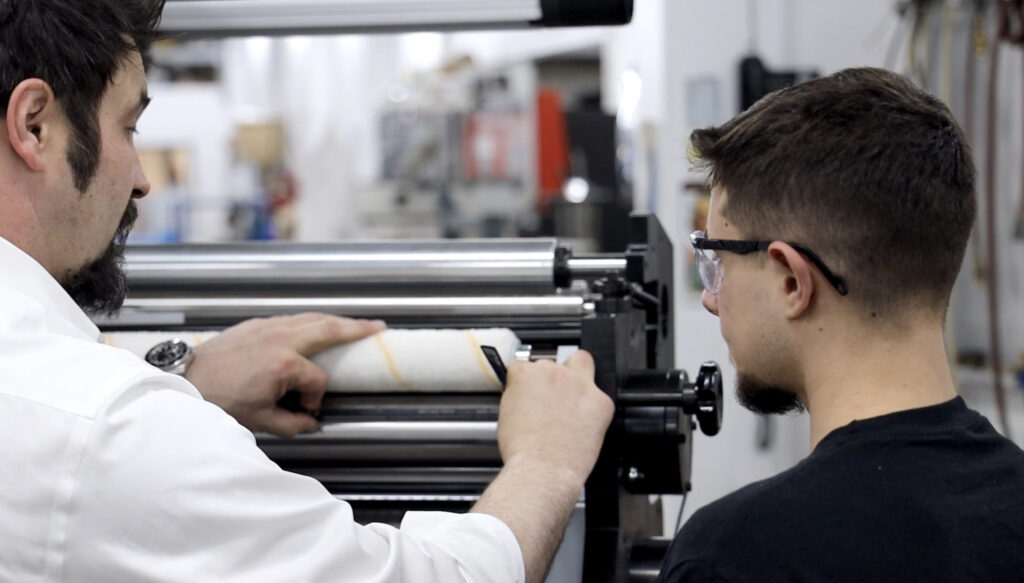An RFID tag system provides many advantages to a wide range of industries for tracking assets, inventory, and many other uses. Radio Frequency Identification, RFID, uses radiofrequency waves to transfer data with wireless communication. RFID technology differs from barcode technology in that barcodes must be scanned with a direct line of sight, whereas RFID tags can communicate to readers through antennas without the requirement for direct scanning.
Where Is RFID Tag Technology Used?
RFID tag systems are used in a wide range of industries and applications including:
- Asset tracking
- Inventory management
- Supply chain management
- File tracking
- Jewelry tracking and theft protection
- Tracking airline luggage
- Hospital wristbands, tracking patients and infants
- Airlines
- Military uses
These are just a few of the applications where RFID technology is used and provides many benefits.
Benefits of RFID Technology
RFID technology provides many benefits, such as:
- Read and manage data without the requirement to manually scan items
- RFID readers process multiple RFID tags simultaneously instead of scanning each item one by one
- Asset tracking and protection reduces losses due to theft or misplacement
Increased efficiency and accuracy in managing inventory and assets.
These are some of the benefits that RFID technology provides with quick and accurate identification and processing of RFID tags.
Components of an RFID Tag System
An RFID system typically consist of RFID tags, antennas, and an RFID reader.
RFID Tags
RFID tags have a microchip inside that contains all of the information about the asset. The two main types of RFID tags are active and passive. Active tags contain an internal power source allowing them to transmit data over a long distance. Passive RFID tags get their power from the RFID reader and have a shorter transmission distance.
RFID Reader
The RFID reader interprets the information from the tag and can be in either a fixed or mobile location. An example of a fixed location would be readers that are located at store entrances to prevent people from walking out the door with an item they didn’t pay for or readers used at tollbooths, for example. Mobile RFID readers can be in the form of handheld scanners, although they would still receive information wirelessly without the requirement of direct line-of-sight scanning.
RFID readers can be either low-frequency which has a longer range, or high-frequency, which works best for short-range applications. High-frequency RFID readers might be best for assets that are stationary, whereas low-frequency readers will perform better for items that move around.
RFID Antennas
The RFID antenna is part of the RFID reader, which emits radio waves and receives data back from the RFID tag. The antenna is the primary link between the reader and the tag and is a critical component of the entire RFID system. The antenna determines the speed and range of the reader. The two primary types of RFID antennas include circular and linear. Circular antennas emit a circularly polarized signal, whereas linear antennas emit a linear polarized signal, each providing specific advantages and disadvantages. The application should determine the type of RFID antenna used. Generally, circular antennas work well for short-range applications, and linear antennas work better for longer-range applications.
Once companies determine that they want to utilize an RFID tag system, they can speak with a converter to produce the type of tags and readers required.
RFID Inlay Insertion Equipment
RFID converters use specialized equipment to insert RFID inlays into tickets, tags, and labels. Tamarack® Products offers solutions for RFID converters with the MVW Inline RFID Inlay Insertion Equipment, designed for easy integration with your press and is servo driven. The MVW Offline RFID Inlay Insertion Equipment is a completely offline platform that is configured to meet your specifications.
Tamarack® Products has been providing converters with high-quality, accurate, and efficient finishing equipment for more than 50 years. We are recognized worldwide for our technical expertise and ability to customize converting equipment solutions to meet the needs of packaging, forms, and label-making industries. Contact us with any questions on producing RFID tags, labels, or tickets with high-quality RFID inlay insertion equipment.





